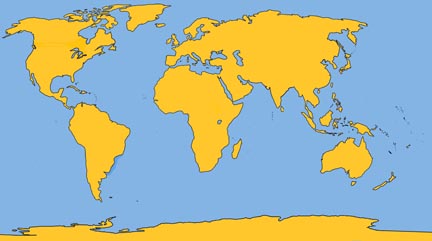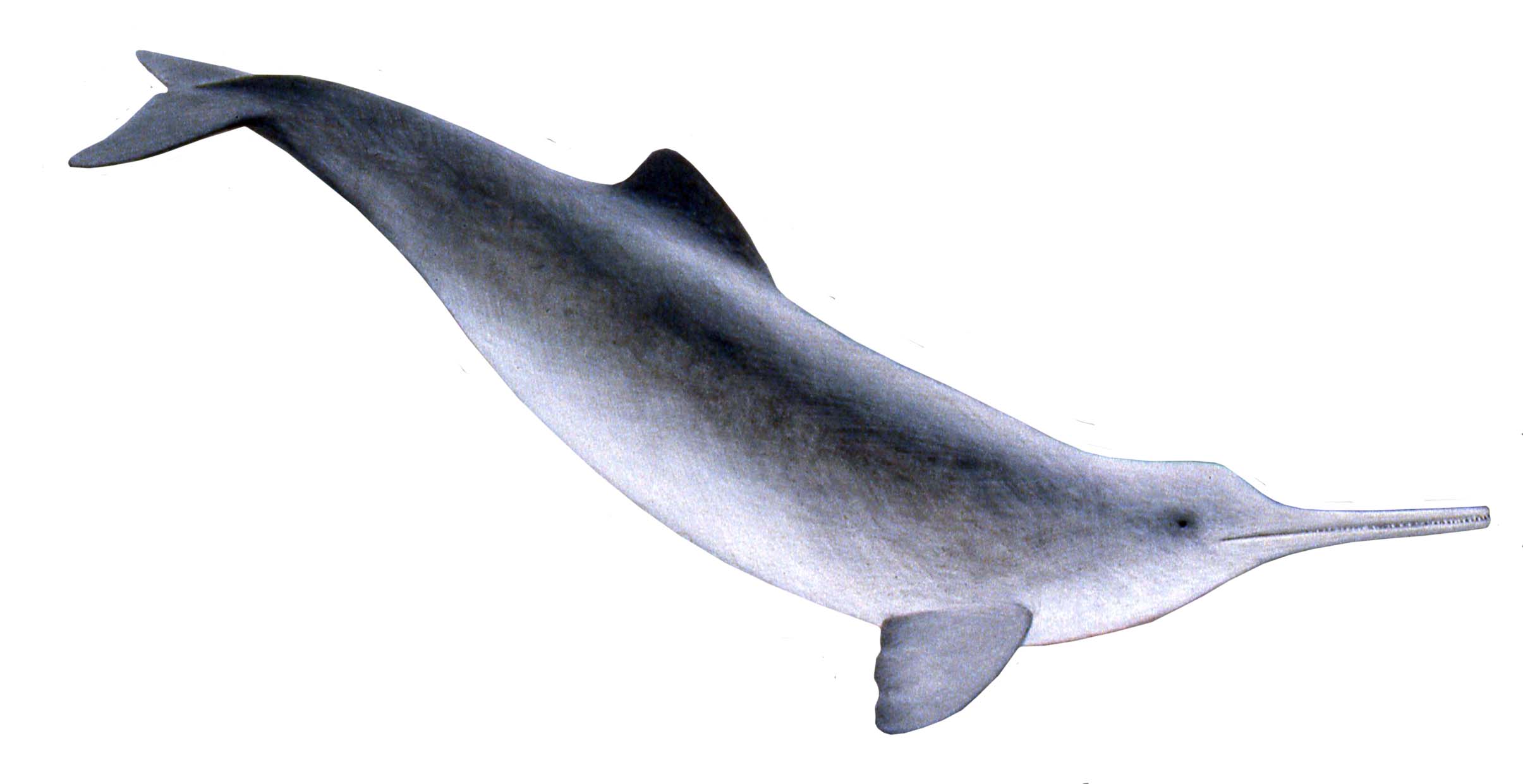Family: Platanistidae
Genus: Pontoporia
Species: P. blainvillei (Gervais and d’Orbigny, 1844)
The only member of the freshwater dolphin family to be found in marine waters, the Franciscana dolphin may be found in fresh, brackish, or salt water, but not in rivers. It is an obscure animal that inhabits isolated areas, and little is known of its habits and natural history.
Physical Description: They have a somewhat stocky body with a disproportionately small head and a long, thin beak — the longest beak-to-body ratio of any dolphin. The juveniles are much stockier with a distinctly shorter beak.
Color: Pale Brown dorsally converging to lighter brown ventrally. Some animals — known to fishermen as “white ghosts” and observed in the La Plata River estuary — are nearly all white.
Fins and flukes: The distinct triangular dorsal fin is located on the mid-back region where it extends back as a ridge to the flukes. The flippers are paddle-shaped and rounded at their tips. The well-spread flukes are pointed at their tips, with a discernible median notch.
Length and weight: For males, 5 ft (1.5 m) and 70 lb (32 kg); for females 5.5 ft (1.7 m) and 90 lb (40 kg).
Teeth: 50 or more sharp, toothpick-shaped teeth are found in each row of the upper and lower jaws.
Feeding: At least 19 species of fish, 3 species of shrimp, and 1 species of squid. They are predominantly bottom feeders.
Breathing and Diving: Little information available.
Mating and Breeding: Calves are about 27 in (70 cm) long, 15 to 20 lb (7 to 9 kg) in weight. They are believed to be born from October to January. Gestation is 10.5 months; lactation lasts 9 months. Sexual maturity occurs at age 2 or 3, when males are 4.5 ft (1.3 m) and females 4.6 ft (1.4 m). The calving interval is typically every two years.
Herding: Numerous observations suggest they do not herd, but instead swim alone or in groups of up to five.
Distribution: Apparently shallow waters only, in the coastal Atlantic Ocean from the Valdes Peninsula and La Plata River delta of Argentina to the Tropic of Capricorn near Rio de Janeiro, Brazil.
Migration: Rarely observed in the La Plata River delta during winter, which suggests migration at this time, northward along the coast
Natural History Notes: These animals are believed to live between 15 and 20 years.








